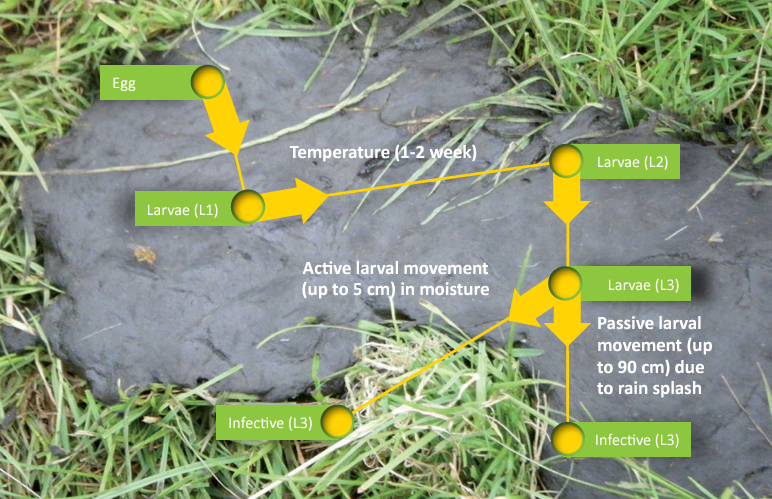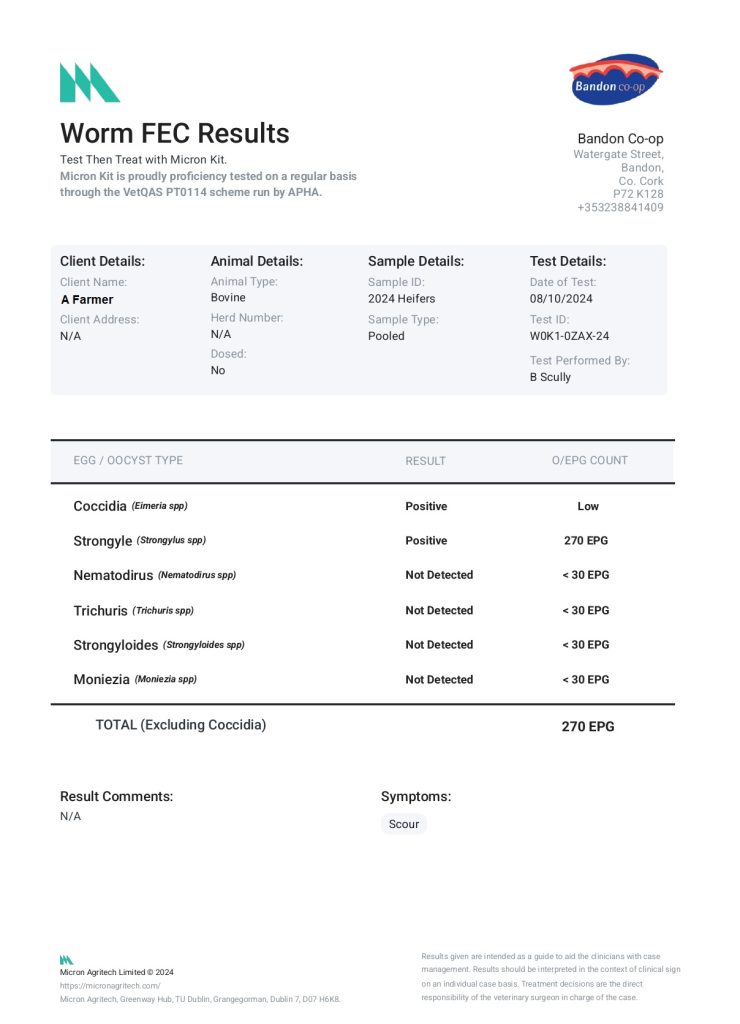Worm & Fluke Faecal Egg Count (FEC) Testing
Are you thinking of treating your animals for fluke or worms?
Bandon Co-op now provide rapid faecal worm & fluke tests in-house with same day results!
Adult gut worms produce eggs that are passed out with the dung. These hatch into larvae and depending on weather conditions can survive for months on the pasture. When animals eat the herbage, the larvae are ingested and develop into adult worms, continuing the life cycle. Over the summer season, there is a build-up of larvae on the pastures that can overwhelm animals resulting in illness such as scour or reduced growth rates.
A faecal egg count (FEC) is a test to determine if there are worm eggs or larvae in a dung sample from livestock. A FEC counts the number of worm or fluke eggs in faeces (dung) and is used to monitor the worm/fluke burden in ruminants. The results are presented as ‘eggs per gram’ (epg) of faeces and the number of eggs is an indication of the number of adult worms or fluke in the gut of the animals. They can also be used to detect liver fluke eggs and coccidial oocysts. It is advised to do a regular FEC for gut worms in first season grazing calves from two months after turn-out as part of a parasite control plan to get a better understanding of the pasture contamination pattern on your farm.
It has the potential to reduce labour, save money, provide early identification of infected animals, and reduce antimicrobial resistance by targeted treatment of animals at the correct time.

How best to use FEC?
Faecal eggs counts should be used alongside other performance indicators, such as growth rates, to give a more rounded picture of whether a worm treatment is needed. If feed is of good quality, but animals are not meeting performance targets and FECs are high, then treatment for worms may be indicated.
What are FECs useful for?
- Avoiding unnecessary treatment and assisting in the correct timing of treatments
- As an indicator of pasture contamination by gut worms
- As an aid to diagnosis in clinically ill animals.
- To demonstrate the presence of adult worms producing eggs
- To determine if the parasite control measures taken this season have been effective.
- To help determine if a recent wormer treatment is effective. Consult your veterinary practitioner on the best protocol if you suspect there might be anthelmintic resistance on your farm.
What are FECs not useful for?
- They are not a useful indicator for estimating the total number of worms within an animal.
- They are not able to detect immature worms that are not yet producing eggs. This means there can be a delay between when an animal becomes infected and when eggs or larvae are detected in the dung.
- Lungworm larvae are not always detected on a FEC when animals are showing clinical signs of lungworm infection. Animals should be treated as soon as they show clinical signs such as coughing or difficulty breathing in the late summer/ autumn while on pasture.
So, what are the benefits of testing dung samples regularly?



get in touch
If you need to organise a Fluke or Worm FEC test, please contact your local sales representative or a member of the agri feeds team
